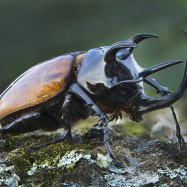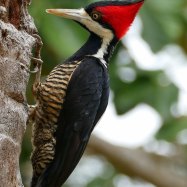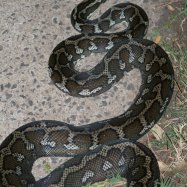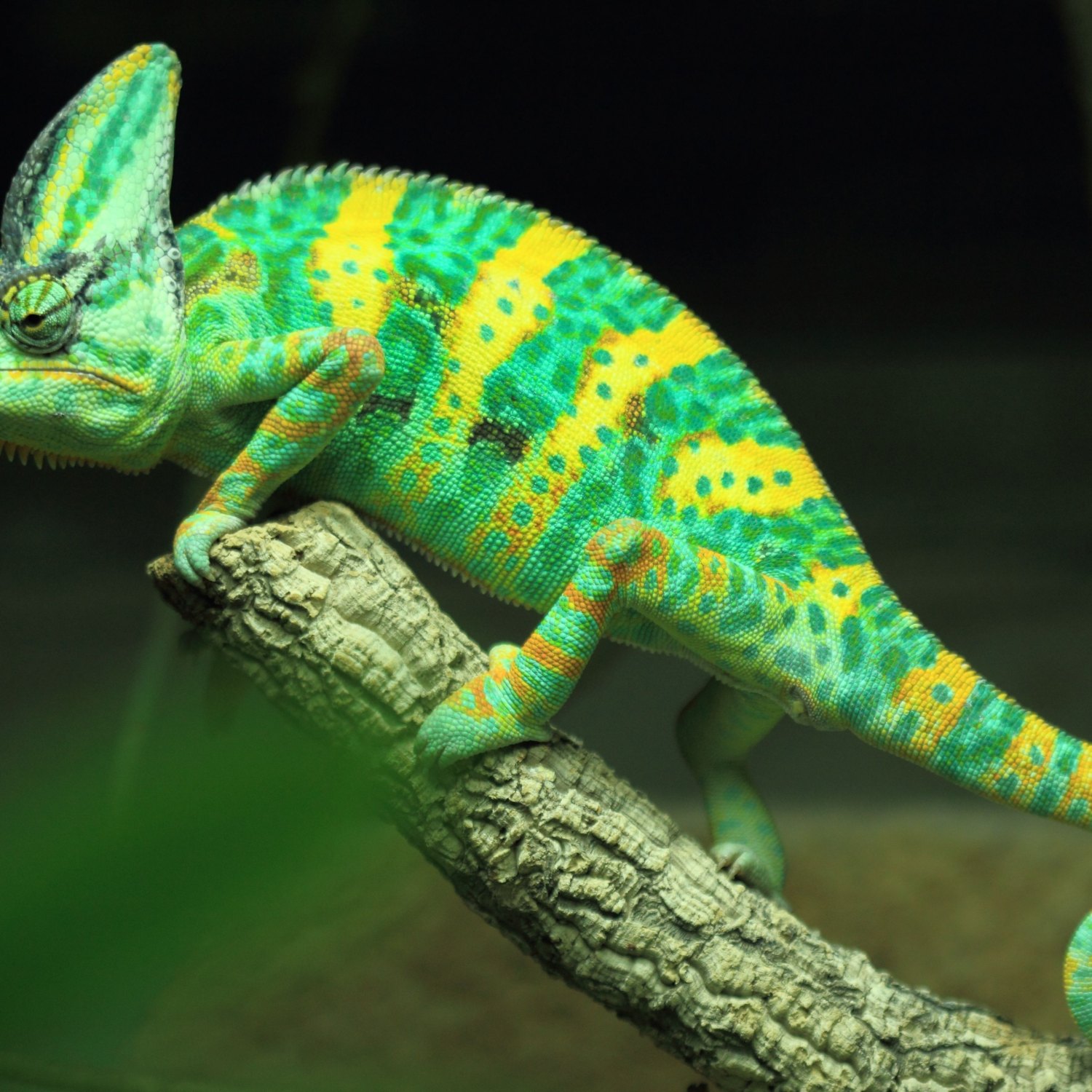
Chameleon
5 to 30 cm (2 to 12 inches)
Did you know that chameleons can change color to blend into their surroundings? These fascinating creatures can grow anywhere from 5 to 30 cm and are mostly found in tropical and subtropical regions. With their compact bodies, long limbs, and prehensile tail, chameleons are skilled climbers. Spot one on your next jungle adventure! #chameleon #tropicalanimals #wildlife
Animal Details Summary:
Common Name: Chameleon
Kingdom: Animalia
Habitat: Tropical rainforests, deserts, savannas, and coastal areas
The Fascinating World of Chameleons
Have you ever wondered what it would be like to change your appearance at will, blending seamlessly into your surroundings? For the chameleon, this is just a regular everyday occurrence. With their remarkable ability to change color and adapt to various environments, chameleons are one of the most unique and fascinating creatures on our planet. Let's take a closer look at this enigmatic reptile and discover what makes them so special.The Science Behind Chameleons
Scientifically known as Chamaeleonidae, chameleons belong to the family of reptiles that are native to tropical and subtropical regions Chameleon. They are classified under the kingdom Animalia, phylum Chordata, class Reptilia, and order Squamata. With over 200 species, chameleons are a diverse group of animals that vary in size, color, and habitat.Chameleons are found in various habitats, including tropical rainforests, deserts, savannas, and coastal areas. They are primarily found in Africa, Madagascar, southern Europe, and southern Asia. Their country of origin also varies, with some species originating from various countries in Africa, Madagascar, Yemen, and Saudi Arabia.
One of the most distinctive features of chameleons is their ability to change color. However, the popular belief that they change color to blend in with their surroundings is a misconception. Chameleons actually change color for communication and thermoregulation purposes. They have specialized cells in their skin called chromatophores, which contain pigments that reflect light differently, giving them their color-changing abilities Ceratopsian.
Chameleons also have a unique body shape, with a compact body, long limbs, and a prehensile tail. Their limbs and digits are fused, forming a "pincer-like" shape, which helps them climb and grip onto branches and other surfaces. Their long tails are also used for balancing while climbing and for grasping prey.
The Chameleon Diet
Chameleons are carnivorous, feeding on a variety of insects, including crickets, grasshoppers, and even smaller lizards. Some larger species are also known to eat small birds and rodents. Their hunting technique is truly remarkable and involves the use of their specialized tongue. Their tongue can extend up to twice the length of their body, allowing them to catch prey with impressive accuracy and speed.In addition to their color-changing abilities, chameleons also have specialized eyes that can move independently of each other. This unique feature allows them to have 360-degree vision without having to move their head. It also gives them the ability to focus on two different objects simultaneously, making them excellent predators.
Chameleons in the Wild
Chameleons are solitary creatures, and their social interactions are limited to mating and territorial disputes. They are diurnal, meaning they are most active during the day, and spend their nights sleeping in trees or hidden among foliage.To cool down on hot days, chameleons have the ability to regulate their body temperature by changing color. A darker color will absorb more heat, while a lighter color will reflect it. They also have a specialized layer of skin that reflects ultraviolet light, protecting them from harmful UV rays.
While most people associate chameleons with their iconic green/brown coloration, there are actually a wide variety of colors and patterns among the different species. Some chameleons can change to up to 14 different colors, and their coloration can also change depending on their mood, temperature, and level of stress.
Conservation Status
Like many other species in the animal kingdom, chameleons face many threats in the wild. Habitat loss and fragmentation, caused by deforestation, urbanization, and the expansion of agriculture, are the main threats affecting chameleon populations. Climate change is also a major concern, as it can disrupt their delicate thermoregulation abilities.Additionally, chameleons are also targeted for their exotic appearance and are often captured and sold in the illegal pet trade. This not only poses a threat to their survival in the wild but also puts additional pressure on already declining populations.
Despite these challenges, there is still hope for the conservation of chameleons. Many organizations and conservation efforts are working towards protecting their habitats and raising awareness about their importance in ecosystems. As responsible citizens and lovers of nature, we must also do our part in preserving these incredible creatures for future generations.
Final Thoughts
The world of chameleons is truly fascinating, and we have only scratched the surface of their remarkable abilities and characteristics. From their color-changing capabilities to their unique hunting techniques, chameleons are truly a marvel of the animal kingdom.However, as we continue to learn more about these creatures and their vital role in the ecosystem, we must also take action to protect them. By being responsible in our actions and educating others about the importance of conservation, we can ensure that chameleons thrive in their natural habitats for years to come.
So the next time you see a chameleon, take a moment to appreciate their intricate camouflage and incredible adaptability. And remember, it's not just about blending in with their surroundings, but about standing out as one of the most unique and special creatures on our planet.

Chameleon
Animal Details Chameleon - Scientific Name: Chamaeleonidae
- Category: Animals C
- Scientific Name: Chamaeleonidae
- Common Name: Chameleon
- Kingdom: Animalia
- Phylum: Chordata
- Class: Reptilia
- Order: Squamata
- Family: Chamaeleonidae
- Habitat: Tropical rainforests, deserts, savannas, and coastal areas
- Feeding Method: Carnivorous
- Geographical Distribution: Africa, Madagascar, southern Europe, and southern Asia
- Country of Origin: Various countries in Africa, Madagascar, Yemen, and Saudi Arabia
- Location: Tropical and subtropical regions
- Animal Coloration: Varies depending on species, but commonly green, brown, or a combination of colors
- Body Shape: Compact body with long limbs and a prehensile tail
- Length: 5 to 30 cm (2 to 12 inches)
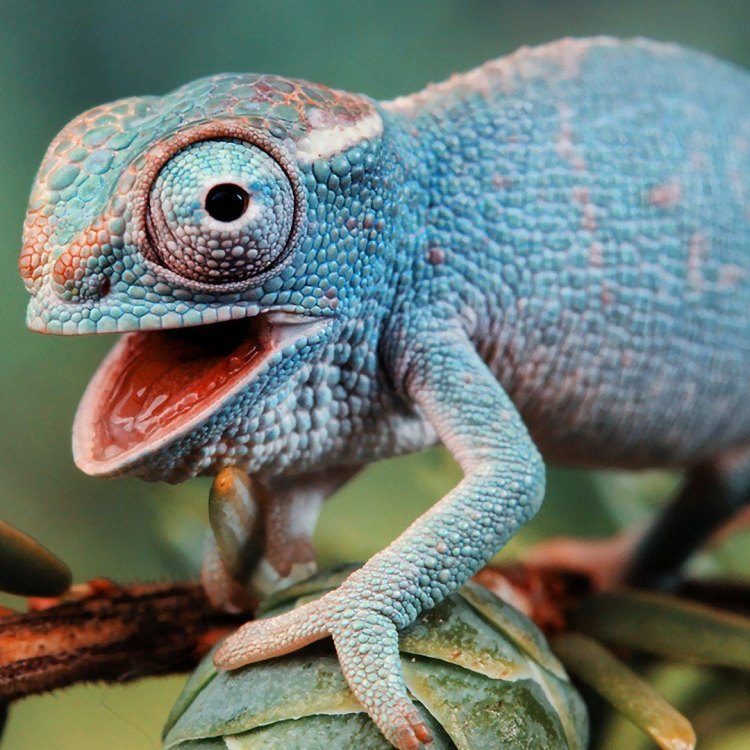
Chameleon
- Adult Size: Varies depending on species, but commonly around 15 to 25 cm (6 to 10 inches)
- Average Lifespan: 2 to 10 years, depending on the species
- Reproduction: Sexual
- Reproductive Behavior: Males perform courtship displays and compete for females
- Sound or Call: Some species can produce calls or hisses
- Migration Pattern: Most species are non-migratory
- Social Groups: Generally solitary animals, except during breeding season
- Behavior: Can change color to blend with the environment, have a projectile tongue to catch prey
- Threats: Habitat loss, illegal pet trade, pollution, climate change
- Conservation Status: Varies depending on species, but many are listed as Least Concern
- Impact on Ecosystem: Important role as predators in their habitats, help control insect populations
- Human Use: Some species are kept as pets
- Distinctive Features: Ability to change color, independently moving eyes, long, sticky tongue
- Interesting Facts: Can rotate their eyes separately, some species have a prehensile tail, can shoot their tongue out rapidly to catch prey
- Predator: Birds, snakes, and larger reptiles
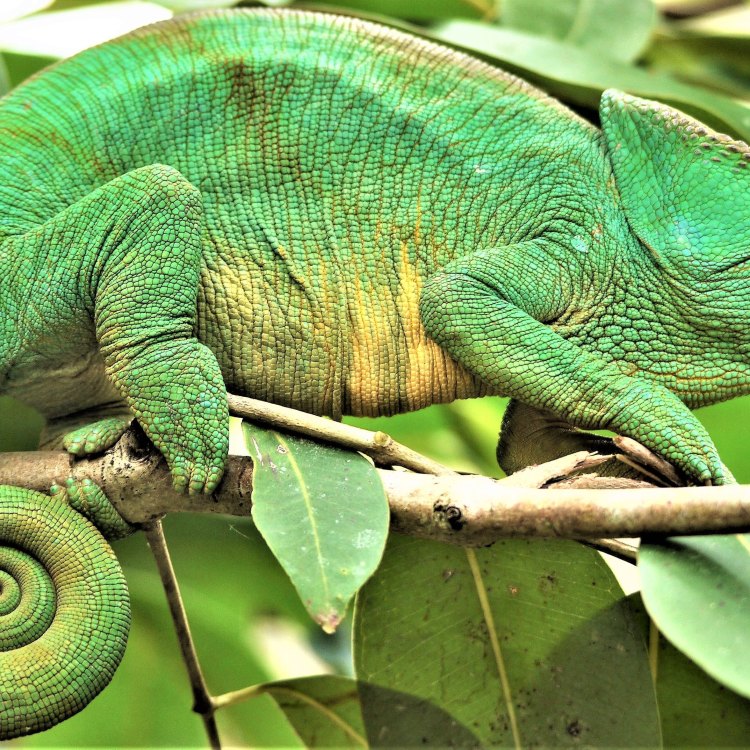
Chamaeleonidae
The Elusive Chameleon: Masters of Disguise
In the vast world of reptiles, one particular creature stands out for its ability to adapt and blend in with its surroundings - the chameleon. These unique reptiles have captivated our imagination for centuries with their ability to change color, their independent moving eyes, and their long, sticky tongues. But there is so much more to these mysterious creatures than meets the eye.From their physical features to their behavior and impact on their ecosystem, chameleons are truly fascinating creatures PeaceOfAnimals.Com. Let's take a closer look at these reptilian masters of disguise and uncover all the secrets they hold.
Size and Lifespan
Chameleons come in a variety of sizes, with the smallest species measuring just a few centimeters and the largest reaching up to nearly 70 centimeters. On average, they range between 15 to 25 centimeters, or 6 to 10 inches, in length. This makes them the perfect size for blending into their environment and avoiding predators.In terms of lifespan, the chameleon's age varies depending on the species and their living conditions. They can live for as little as 2 years and as long as 10 years in captivity. In the wild, their lifespan can be shortened due to various threats, such as habitat loss and predation.
Reproduction and Behavior
Like most reptiles, chameleons reproduce sexually. During the breeding season, males perform elaborate courtship displays to attract females Cockatoo. These displays can involve changing colors, puffing up their bodies, and bobbing their heads. Once a female has been successfully courted, she will lay her eggs in a hole dug in the ground by the male.Chameleons are generally solitary animals, except during the breeding season. They can be territorial and will display aggressive behavior towards other chameleons, particularly males. However, they do not form social groups or live in colonies like some other reptiles.
Hidden Talents: Color Change and Projectile Tongue
One of the most well-known abilities of chameleons is their ability to change color. This is not done for camouflage, as is commonly believed, but to regulate their body temperature, communicate with other chameleons, and express emotions. Each species has a limited range of colors they can produce, but within that range, they can display an endless variety of hues and patterns.But color change is not the only trick up a chameleon's sleeve. They also possess a long, sticky tongue that can shoot out with great speed and accuracy to catch their prey. This projectile tongue is a remarkable adaptation that allows them to catch insects from a distance, without having to leave their hiding spot.
Threats and Conservation Status
Unfortunately, chameleons face numerous threats, both in the wild and in captivity. One of the biggest threats is habitat loss due to deforestation and human development. This not only affects their ability to find food and shelter but also exposes them to other threats such as illegal pet trade, pollution, and climate change.The conservation status of chameleons varies depending on the species, with some being listed as Least Concern and others as Endangered. Due to their unique features and elusive nature, chameleons have become popular in the exotic pet trade, leading to the decline of some wild populations.
Role in Ecosystem and Human Use
As predators, chameleons play a crucial role in their ecosystems. They help control insect populations by feeding on a variety of insects, including flies, crickets, and grasshoppers. In some areas, they are also known to eat small lizards, snails, and spiders.In human use, some chameleon species are kept as pets. However, they require specialized care and a specific environment to thrive, making them challenging pets for inexperienced owners. Furthermore, capturing wild chameleons for the pet trade can have a detrimental impact on their populations.
Distinctive Features and Interesting Facts
Chameleons are known for their ability to change color, but there are other unique features that make them stand out. One is their independently moving eyes - each eye can move separately, allowing them to have a 360-degree view of their surroundings. This also helps them to see predators approaching from any direction.Another interesting fact about chameleons is their ability to rotate their eyes separately, giving them better depth perception and improved hunting abilities. Some species also have a prehensile tail, which means they can use it as a fifth limb to help them climb and hold onto branches.
Predators
Despite their cunning abilities to blend in with their surroundings, chameleons still have predators. The most significant threats to chameleons are birds, snakes, and larger reptiles. Their natural defense mechanism is their color change, which can make them less visible to predators. They also have sharp claws and a tail that can be used in self-defense.In conclusion, chameleons are truly fantastic creatures with many unique features and adaptations. While they may be elusive, they still play an essential role in their ecosystems. It is our responsibility to protect them and their habitats to ensure their survival for generations to come. So, the next time you spot a chameleon in the wild, take a moment to appreciate their incredible abilities and the important role they play in our world.
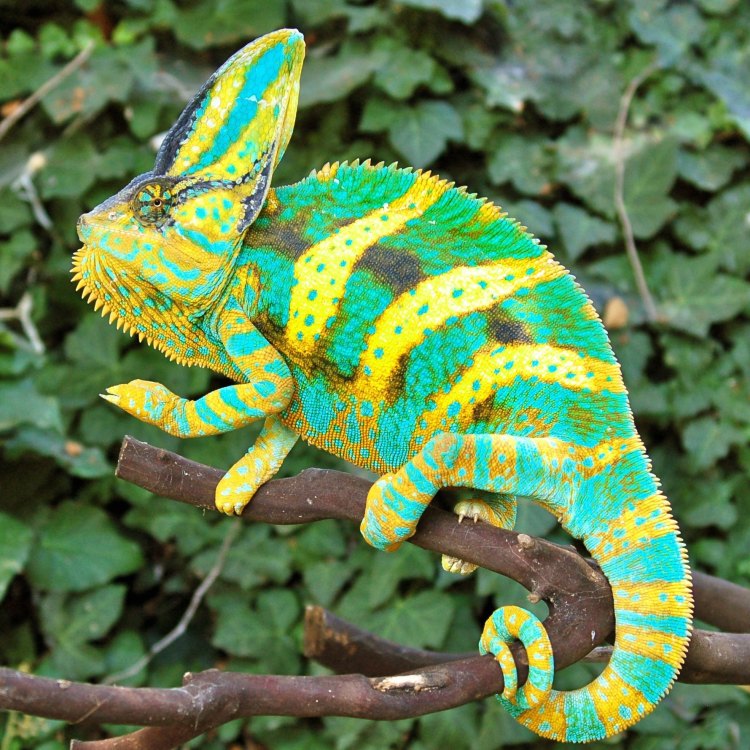
The Fascinating World of Chameleons
Disclaimer: The content provided is for informational purposes only. We cannot guarantee the accuracy of the information on this page 100%. All information provided here may change without prior notice.



